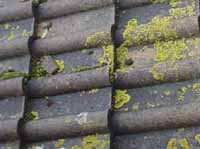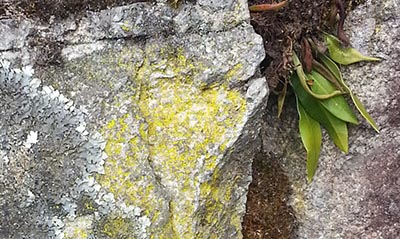Weathering and erosion: how rocks are broken down
Firstly it is important to point out that weathering is not the same as erosion.
Weathering comprises the processes that cause the structure of a rock to break, and that will be described in this page.
Erosion is the process by which the rock fragments ( produced by weathering) are carried away by the wind and water (rivers, sea).
Various forms of Weathering
Rocks are attacked chemically, physically and biologically. That means, in all possible ways.

Rocks are attacked by acids that can originate in animals, plants and minerals . Limestone in particular is vulnerable to chemical attack. This reaction is used as a test for the identification of this class of rocks.
Acid rain has been causing an accelerated decomposition of important sculptures and monuments made of limestone (marble)
Rusting is another process involved in weathering of rocks containing elements like iron. Rocks corroded in this way show rust streaks identical to those commonly seen in boats, bridges etc...
Biological processes:
Some fungi and bacteria decompose rocks.
Fungi manage to extract minerals from the rocks. Certain elements that are essential for their metabolism are obtained this way. Liquens are associations between fungi and algae (symbiosis),where the fungi provide the minerals and the algae provides energy and carbohydrates(obtained by photosynthesis).We often see liquens stuck to rocks and buildings:

Liquens in roof tiles (Brighton-UK)

Liquens in rocks (Machu Picchu - Peru)


